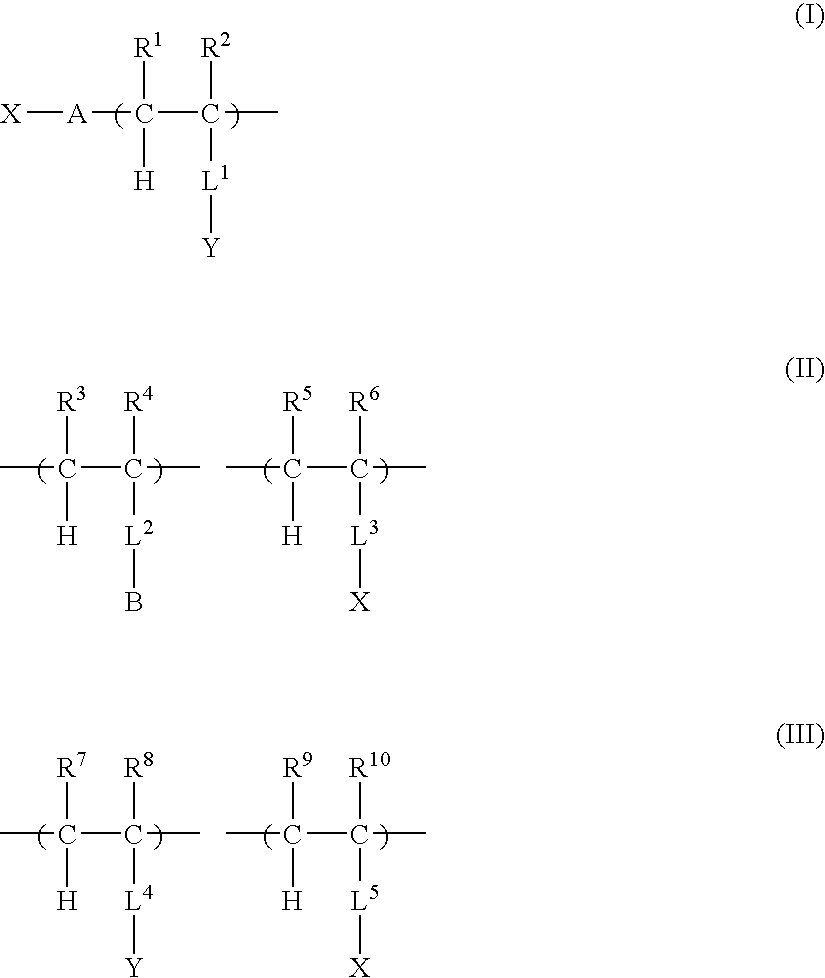Two-liquid composition, hydrophilic composition and hydrophilic member
- Summary
- Abstract
- Description
- Claims
- Application Information
AI Technical Summary
Benefits of technology
Problems solved by technology
Method used
Image
Examples
example 1
[0205]The following Solution A and Solution B were prepared independently. After these solutions were each stored at 24° C. for one month, a coating solution was prepared by adding Solution B to Solution A under stirring at 500 rpm with a magnetic stirrer and stirring the resultant mixture for 10 minutes.
[0206]Float sheet glass (2 mm in thickness), the commonest transparent sheet glass, was prepared and the surface of the sheet glass was made hydrophilic by UV / O3 treatment of 10 minutes. Then, the coating solution was spin-coated on the sheet glass surface, and dried at 100° C. for 10 minutes, thereby forming a hydrophilic film having a dry coverage of 1.0 g / m2. The waterdrop contact angle of the thus made hydrophilic member was found to be 2.1°, which proved that the hydrophilic member surface is very highly hydrophilic.
[0207]
20 mass % Aqueous solution of colloidal silica180 gdispersion (Snowtex C produced by NissanChemical Industries, Ltd.)Polymer (1)180 gTetramethoxysilane540 g5 ...
example 2
[0214]A hydrophilic member was made in the same manner as in Example 1, except that the acid catalyst was changed to 1 mol / L nitric acid (produced by Wako Pure Chemical Industries, Ltd.)
example 3
[0215]A hydrophilic member was made in the same manner as in Example 1, except that the metal alkoxide was changed to tetraethoxysilane (produced by Tokyo Chemical Industry Co., Ltd.).
PUM
| Property | Measurement | Unit |
|---|---|---|
| Temperature | aaaaa | aaaaa |
| Percent by mass | aaaaa | aaaaa |
| Percent by mass | aaaaa | aaaaa |
Abstract
Description
Claims
Application Information
 Login to View More
Login to View More - R&D
- Intellectual Property
- Life Sciences
- Materials
- Tech Scout
- Unparalleled Data Quality
- Higher Quality Content
- 60% Fewer Hallucinations
Browse by: Latest US Patents, China's latest patents, Technical Efficacy Thesaurus, Application Domain, Technology Topic, Popular Technical Reports.
© 2025 PatSnap. All rights reserved.Legal|Privacy policy|Modern Slavery Act Transparency Statement|Sitemap|About US| Contact US: help@patsnap.com



